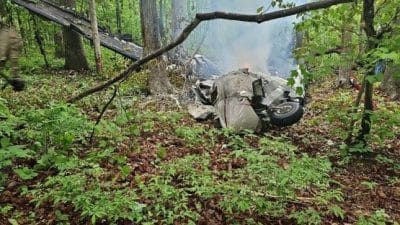
Nurseries in Virginia have been struggling to sell redbud and maple because of wilt and severe dieback in the last two years. Virginia’s state tree – the dogwood – hasn’t been immune to the damage either.
The Virginia Cooperative Extension, Virginia Tech’s College of Agriculture and Life Sciences and the Virginia Department of Agriculture and Consumer Services have teamed up to create a fact sheet to raise awareness of vascular streak dieback along with tips on how to avoid and manage it.
Vascular streak dieback is a non-curable plant disease caused by a fungus that is showing up in multiple states. Early symptoms of the disease include yellowing and discoloration of leaves and stunting and wilting.
Vascular streak dieback has been difficult to diagnose, characterize and manage because of a number of problems, including the fact that it is not culturable, said fact sheet co-author Elizabeth Bush, a senior research associate in the School of Plant and Environmental Sciences and diagnostician in the plant disease clinic at Virginia Tech.
“Many microorganisms cannot be visualized on plant tissue, so culturing them out of plant tissue on culture media is necessary for diagnosis,” Bush said. “Plant diagnostic labs, such as the plant disease clinic, use a variety of culture media to recover various fungal and bacterial pathogens.”
Vascular plant diseases, in general, are hard to treat as they attack the water conducting tissue of the plant. A tree responds by blocking its vascular system to contain the disease. In doing so, the water supply to the plant is cut off, leading it to wilt and dieback.
“So it’s not as easy as just pruning out the problem, like with a disease that causes a canker,” Bush said.
In the fact sheet, Bush and Devin Bily, a plant pathologist with the Virginia Department of Agriculture and Consumer Services, suggest several best practices to avoid the disease and preventative fungicides for use by nurseries.
Unfortunately, there are no current recommended pesticide or cultural treatments for plants already exhibiting the symptoms of the disease.
But, Bush said, it is good that nurseries are aware of this disease, are on the lookout and know how to recognize the problem.
In addition to the fact sheet, the plant disease clinic at Virginia Tech is collaborating with faculty in the School of Plant and Environmental Sciences to perform metagenomic analysis on plant samples diagnosed with vascular streak dieback. Metagenomic sequencing consists of obtaining nucleotide sequences of a pathogen directly from a plant sample without the need for culturing. It will help to further characterize the disease, which presents unique challenges since the pathogen is not culturable.
This work is being funded by the Virginia Agricultural Council.










